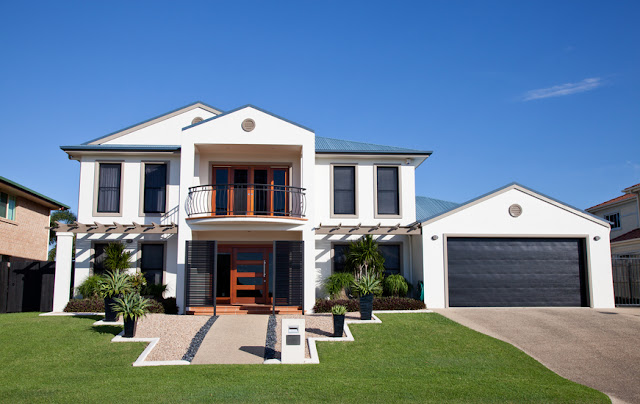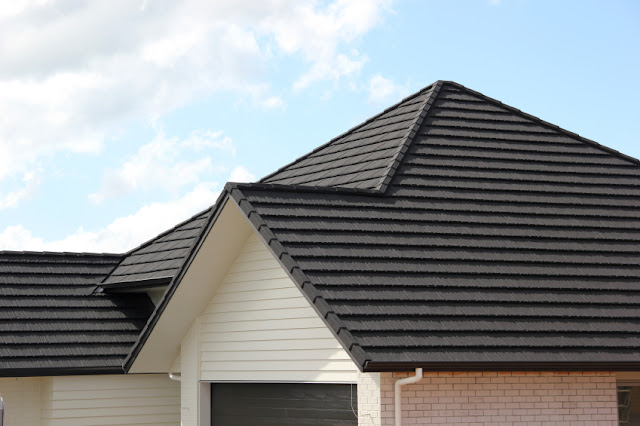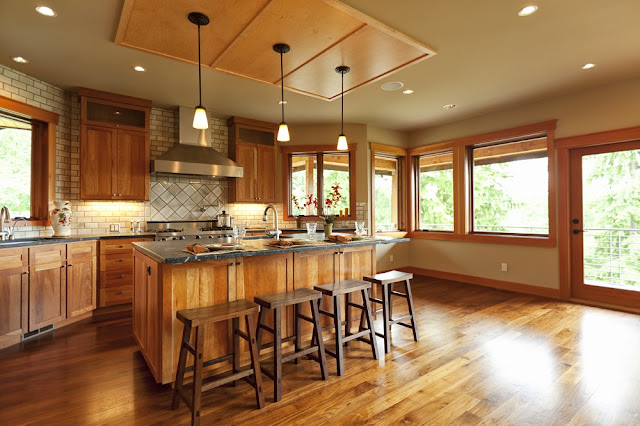The search for a new house
is exciting because it’s filled with possibilities. You can buy a home with the
amenities that you’ve been missing and in an area that suits your lifestyle.
Just don’t let the excitement overshadow the equally-important practicalities
associated with this major purchase.
You’ve probably already
considered the neighborhood in which you’d like to live. But have you thoroughly
thought about it? What about the school district? If you have kids,
you should check that out. Is your new home close enough to work? If you’re a
working couple, you need to think about proximity to two jobs.
Other things to look at:
- Walking and biking in the area
- Libraries
- Parks
- Churches
- Public transportation
If any or all of these
things are important to you, now is the time to look into them. Once you know
where you want to live, you can start looking at houses there. Here are eight
things on which to focus as you walk through each house:
1. Start at the Roof
You don’t want to be
replacing the roof after a few years of living in your new home. Roofs are
expensive. A sagging roof is a sign of trouble ahead. If it has asphalt
shingles, there should be a layer of granules on every shingle. If you see
“bald” shingles, that roof is showing its age. Shingles that are curled
and buckled means you’re at least looking at repairs—maybe even replacement.
Check the attic for leaks.
Water stains on the floor could be indicating a leak around the flashing. And
while you’re in the attic, look for signs of daylight coming in through the
roof. Enough said!
2. Check the Temperature
You’ll want to be comfortable in your new house, but if your heating and cooling systems aren't up to the task, you won’t be. Take a look at the furnace. Does it look up to date and in good repair? Old equipment is expensive to fix, and its inefficiency can put a hurting on your utility bills. Getting a whole new system is costly, and the work is messy and disruptive. Make sure your new home has a recently-installed, energy-efficient heating and cooling system.
3. Look at the Interior Layout
The floor
plan will have a big effect on your daily life. While you’re walking through
the rooms, think about a typical day. Does the house have a natural flow as you
move from one room to the next? Do you have to walk through a master bathroom
to get to a walk-in closet? Is the master bedroom far enough away from the
entertainment area for those times when one of you goes to bed early, and the
other stays up late to take in an action movie?
Is the laundry in a convenient spot, or is it in a dark corner of the basement?
Since this is a chore that usually needs to be often done, having a laundry
near a main living area can make life easier.
These
things may not seem like a big deal now, but keep in mind that during your
extended stay here, they may become annoying.
4. Inspect the Lay of the Land
Don’t forget to look
outside. Does the property have a driveway? A steep one could prevent your kids
from shooting hoops there. A long one might be hard to clear after a snowstorm.
And one that’s shared with your neighbor could be a problem-in-waiting.
Look at the way the house
is positioned on the lot. Does it allow for enough natural light? Does its
position enable you to add a deck or another room in the future?
If there
is a fence, make
sure it’s located correctly and is in good shape. Remember, sometimes good
fences make good neighbors. And speaking of neighbors, see how close their house is positioned to your potential new home.
5. The Sniff Test
A musty smelling house may be warning you of
problems. Other smells that are worrisome: natural gas, sewer gas, pet odors, and
cigarettes. Some of these might not bother you, but others—like gas and
sewage—beg for further investigation.
6. Poke around the Pipes
When you’re in the
kitchen, look at the plumbing underneath the sink.
Make sure there are no leaks, mold, or water damage. Repeat the process in the
bathrooms. Mold is not only unattractive. It’s known to cause serious health
issues with babies, the elderly, and anyone who already has asthma. You don’t
want to move into a moldy house.
7. Check the Insulation
Your heating system can’t
do its best work if the house allows the heat it generates to leak away. Look
at the insulation in the attic. It should be thick enough that it’s equal in height to the joists.
Water pipes and heating ducts should also be wrapped with insulation.
Double-paned windows help
to keep your house warm, and they soundproof it against outside noises.
8. Kitchen Needs
Let the chief cook decide what constitutes the perfect kitchen. You might not find perfection, but you should be able to check
off most of the items on your wish list. Keep in mind that the appliances can
be replaced, but if you prefer a gas stove, make sure there is a gas line
available if you intend to replace the electric range.
Look at the layout, the
amount of cabinet space, the number of sinks, and the overall size. This is one
area in which you won’t want to compromise if you do a lot of cooking.
New Home Inspections
You’ve probably done all
you can do in these eight steps. Now you need to hire a home inspector to make sure that the
wiring is up to code, the foundation is solid, and there are no wood-eating
pests.
House-Hunt with an Expert
Whether you’re buying or
selling a home in Malibu, Pacific Palisades, or LA’s west side, you need the
help of an experienced and dedicated Real Estate Agent. Purchasing a house and deciding on a new home is a big
step. Use a qualified agent when you take it!




No comments:
Post a Comment